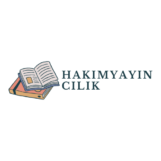As a technical writer with over a decade of experience, I’ve seen firsthand how the right education can transform someone’s career trajectory in this field. Technical writing programs offer a structured path to master the essential skills needed to create clear, concise documentation that bridges the gap between complex information and end users.
I’m often asked about the best way to break into technical writing, and my answer consistently points to specialized programs designed for this purpose. Whether you’re a complete beginner or a professional looking to upgrade your skills, these programs provide comprehensive training in document design, content strategy, and user experience principles. They’ll equip you with the tools you need to succeed in today’s fast-paced technical communication landscape.
Key Takeaways
- Technical writing programs combine academic knowledge with practical skills, teaching essential competencies like documentation principles, tools, and content management strategies
- Most programs come in three levels: bachelor’s degrees (4 years), master’s degrees (2 years), and certification programs (3-12 months), each offering different depths of specialization
- Core skills taught include document design, research methods, tool proficiency (like MadCap Flare and Adobe FrameMaker), and industry-standard style guides
- The job market shows strong growth with a 12% increase projected from 2020-2030, offering competitive starting salaries between $55,000-$75,000
- Career advancement opportunities are excellent, with senior positions reaching $85,000-$115,000 and specialized roles in API documentation or content strategy offering even higher compensation
- Industry certifications in specialized areas like API documentation, DITA, or technical writing can increase salary potential by 10-15%
Technical Writing Programs
A technical writing program teaches industry-standard documentation principles, tools, and methodologies. I’ve found these structured educational pathways combine academic knowledge with practical applications to create user-focused technical content.
Core Skills Taught in Technical Writing Programs
Technical writing programs focus on these essential competencies:
- Writing clear procedures using standardized style guides
- Creating user manuals, API documentation, release notes
- Mastering documentation tools like MadCap Flare, Adobe FrameMaker
- Implementing single-sourcing content management strategies
- Developing information architecture frameworks
- Applying UX research methodologies
- Practicing project management fundamentals
- Learning XML, HTML, CSS for digital documentation
- Using version control systems like Git
- Conducting technical interviews with subject matter experts
- Software Documentation Specialist at tech companies
- API Documentation Writer for developer platforms
- Medical Writer in healthcare organizations
- UX Writer for product design teams
- Knowledge Base Manager for support teams
- Documentation Team Lead in engineering firms
- Content Strategist for digital agencies
- Information Architect in consulting firms
| Industry Sector | Average Starting Salary | Job Growth Rate |
|---|---|---|
| Technology | $65,000 | 12% annually |
| Healthcare | $62,000 | 10% annually |
| Manufacturing | $58,000 | 8% annually |
| Government | $55,000 | 5% annually |
Types of Technical Writing Programs
Technical writing programs come in three distinct academic levels, each offering specialized curriculum paths to match different career goals. Each type presents unique advantages in terms of depth, duration, and focus areas.
Bachelor’s Degree Programs
Bachelor’s degree programs in technical writing span 4 years with 120 credit hours of coursework. These programs combine foundational writing courses with specialized technical communication subjects including document design, content management, and digital publishing tools. Core courses typically include:
- Writing for Digital Platforms
- Technical Documentation Fundamentals
- Information Architecture
- Programming Basics for Writers
- Visual Communication Design
Master’s Degree Programs
Master’s programs require 30-36 credit hours completed over 2 years of advanced study. These programs emphasize research methods, management strategies, and complex documentation projects through:
- Advanced Content Strategy
- User Experience Research
- Project Management
- Global Technical Communication
- Emerging Technologies in Documentation
- API Documentation
- DITA XML
- Technical Publication Tools
- Single Sourcing Methods
- Content Management Systems
| Program Type | Duration | Credit Hours | Focus Areas |
|---|---|---|---|
| Bachelor’s | 4 years | 120 | Comprehensive foundation |
| Master’s | 2 years | 30-36 | Advanced specialization |
| Certification | 3-12 months | Varies | Specific skill sets |
Key Components of Technical Writing Education
Technical writing education incorporates essential elements that form the foundation of professional documentation skills. These components create a comprehensive framework for developing expertise in technical communication.
Document Design and Structure
Document design principles focus on creating clear visual hierarchies through typography, spacing, and layout elements. I’ve found that effective technical documentation follows established style guides like Microsoft Manual of Style or Chicago Manual of Style, incorporating:
- Single-source content architecture for multiple output formats
- Information mapping techniques for organizing complex data
- Typography standards including font selection, size hierarchies, and white space usage
- Visual elements such as diagrams, flowcharts, and screenshots
- Template development for consistent document formatting
Research and Analysis Methods
Research methodologies in technical writing programs emphasize gathering accurate technical information and understanding user needs. The core research components include:
- User persona development through demographic analysis
- Task analysis techniques for workflow documentation
- Heuristic evaluation methods for usability testing
- Scientific literature review protocols
- Subject matter expert interview strategies
- Data visualization techniques for complex information
| Tool Category | Common Applications | Primary Use Cases |
|---|---|---|
| Authoring Tools | Adobe FrameMaker, MadCap Flare | Long-form documentation |
| Version Control | Git, SVN | Documentation versioning |
| API Documentation | Swagger, ReadMe | API reference materials |
| Content Management | DITA, Docs-as-Code | Content organization |
| Graphics Software | Adobe Illustrator, Snagit | Visual content creation |
Top Technical Writing Programs in the US
Based on my analysis of curriculum strength, industry recognition, and graduate placement rates, these technical writing programs stand out for their comprehensive training and career outcomes.
University-Based Programs
The University of Washington’s Master of Science in Technical Communication program offers specialized tracks in UX design, content strategy, and API documentation. Carnegie Mellon University features a Technical Writing & Communication certification with direct industry partnerships. The University of Minnesota-Twin Cities provides a Bachelor of Science in Technical Communication with a 92% job placement rate within 6 months of graduation.
| University | Program Type | Duration | Notable Features |
|---|---|---|---|
| Univ. of Washington | MS | 2 years | UX & API specialization |
| Carnegie Mellon | Certificate | 1 year | Industry partnerships |
| Univ. of Minnesota | BS | 4 years | 92% placement rate |
- Google Technical Writing Certification: 6-month program focusing on software documentation
- UC San Diego Extension: Online technical communication certificate with emphasizing medical writing
- Oregon State University E-Campus: Bachelor’s in technical writing with asynchronous learning options
- UC Berkeley Extension: Professional sequence in technical communication with portfolio development
| Platform | Program Length | Key Focus Areas |
|---|---|---|
| 6 months | Software docs | |
| UC San Diego | 12 months | Medical writing |
| Oregon State | 4 years | General tech writing |
| UC Berkeley | 9 months | Portfolio building |
Industry Requirements and Standards
Technical writing adheres to specific industry standards that ensure documentation quality across organizations. These requirements include established style guides professional technical writers follow to maintain consistency in their documentation.
Technical Writing Style Guides
I’ve identified several authoritative style guides used in technical documentation:
- Microsoft Manual of Style: Defines standards for software documentation formatting rules content organization citation methods
- Chicago Manual of Style: Establishes guidelines for academic technical writing punctuation grammar mechanics
- APA Style Guide: Sets requirements for scientific technical documentation research papers statistical reporting
- Google Developer Documentation Style Guide: Outlines specifications for API documentation code samples technical terminology
- DITA (Darwin Information Typing Architecture): Provides XML-based standards for structured authoring content reuse information typing
- Single-sourcing: Create content once publish to multiple formats (PDF HTML ePub) maintain consistency
- Version Control: Track document changes through systems like Git document revision history maintain audit trails
- Accessibility Standards: Follow WCAG 2.1 guidelines implement alt text use semantic markup ensure screen reader compatibility
- Information Architecture: Structure content hierarchically implement consistent navigation patterns create logical information flow
- Testing Protocols: Conduct peer reviews perform usability testing validate technical accuracy verify procedures
| Documentation Standard | Industry Adoption Rate | Implementation Time |
|---|---|---|
| DITA | 67% | 3-6 months |
| Markdown | 89% | 1-2 months |
| API Documentation | 78% | 2-4 months |
| Knowledge Base | 92% | 1-3 months |
| Release Notes | 95% | 2-3 weeks |
Job Market and Salary Outlook
The technical writing job market shows a 12% growth rate from 2020 to 2030, according to the U.S. Bureau of Labor Statistics. This growth translates to 5,500 new positions annually, offering competitive salaries ranging from $55,000 to $115,000.
Entry-Level Opportunities
Entry-level technical writing positions offer starting salaries between $55,000 to $75,000, varying by industry sector:
- Create software documentation in tech companies ($65,000-$70,000)
- Write medical device instructions in healthcare ($60,000-$65,000)
- Develop user manuals in manufacturing ($55,000-$60,000)
- Document processes in government agencies ($58,000-$63,000)
Common entry-level positions include:
- Junior Technical Writer
- Documentation Specialist
- Content Developer
- Technical Editor
- Knowledge Base Writer
Career Advancement Potential
Technical writers advance through specialized roles with increased responsibilities:
| Position Level | Average Salary | Years of Experience |
|---|---|---|
| Senior Technical Writer | $85,000-$95,000 | 5-7 |
| Lead Documentation Specialist | $95,000-$105,000 | 8-10 |
| Documentation Manager | $105,000-$115,000 | 10+ |
Career progression paths include:
- Moving into content strategy ($90,000-$110,000)
- Specializing in API documentation ($95,000-$115,000)
- Leading documentation teams ($100,000-$120,000)
- Consulting for multiple organizations ($110,000-$150,000)
- API Documentation Certification (+15% salary increase)
- DITA Specialist (+12% salary increase)
- Certified Technical Professional Writer (+10% salary increase)
Writing Program
A technical writing program can be your gateway to a rewarding career in documentation and content creation. I’ve seen firsthand how these programs equip professionals with essential skills while opening doors to diverse opportunities across multiple industries.
Whether you choose a bachelor’s degree master’s program or professional certification the investment in technical writing education pays off through competitive salaries and strong job prospects. I strongly recommend exploring these programs if you’re passionate about clear communication and want to bridge the gap between complex information and user understanding.
Ready to take the next step? Start researching programs that align with your career goals and time commitments. Your future in technical writing begins with choosing the right educational path.

